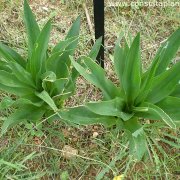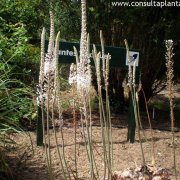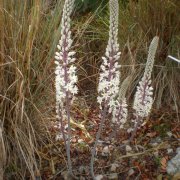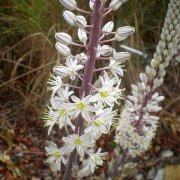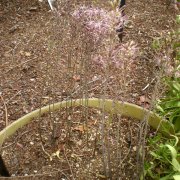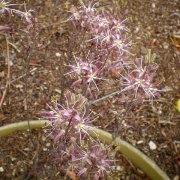Care of the bulbous plant Urginea maritima or Sea squill |
|
The genus Urginea, family Asparagaceae, comprises 50 species of bulbous plants native to Europe, Africa and India. Some species are: Urginea maritima, Urginea undulata. Common names: Sea squill, Crusader Spear, White Squill, Sea onion, Maritime squill, Red squill. This species is native to the Mediterranean region. They are bulbous herbaceous plants that reach 1.5 meters (4.9 feet) in height; the mik bulb 15 cm (5.9") in diameter. The lanceolate leaves are alternate, sprout in spring and are grouped in a rosette without a petiole. In summer the leaves die and the flowers appear in long branches without branches. In the scapes there are more than 50 white flowers that turn into capsule-shaped fruits; after flowering the bulb can be stored or buried (do not water). This very easy-to-grow and low-maintenance plant is used to form clumps of bulbous and rockery. Sea squill has medicinal properties: for diuretic, digestive, circulatory problems and for insect bites, chilblains and warts. Urginea maritima needs full sun or semi-shade exposure. White Squill is a very rustic plant that can grow in any type of soil. Water moderately waiting for the substrate to dry; they resist periods of drought. Urginea maritima does not need fertilizers. Maritime squill is a sensitive plant to excess of irrigation. Sea squill is propagated by seeds but take 5 years to flower. The bulbs should be stored in a dry place and planted in autumn. |
Images of the bulbous plant Urginea maritima or Sea squill |
Find plants
Urginea maritima or Sea squill | Care and Growing
© 2025 FavThemes
